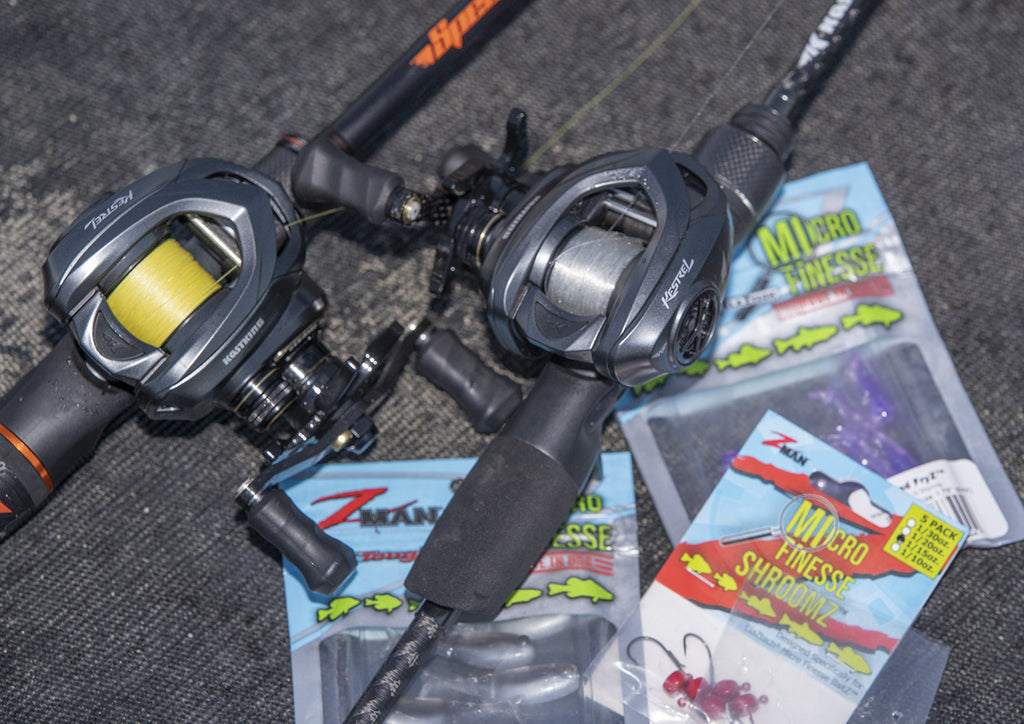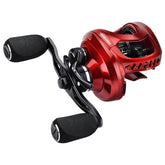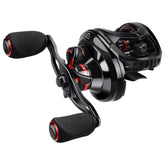
Choose the Right Kind of Fishing Line
Knowing the right type and kind of fishing line is one of the most essential skills a fisherman can learn. Not only will this decision also determines what type of rod, reel, bait, and tackle you can and cannot use, but selecting the correct type of fishing line could mean the difference between catching or losing the fish on the end of it!
After carefully thinking about the main species of fish that you will be targeting with your fishing line, you can start to dig into the pros and cons of which type of line will be the best for your needs. There are three major types of fishing lines that are used to catch fish: monofilament, braid, and fluorocarbon. Each of these types of fishing lines comes with its own sets of benefits and disadvantages, so let’s talk about them!

Monofilament Line
Monofilament fishing line is one of the most basic and widely used fishing lines on the market. It has long been the industry standard for most anglers for well over 50 years. It is often the most inexpensive type of fishing line and comes with a lot of value for the price you will pay for it. It can cast a wide variety of different spinning or plug tackle extremely well and is easy to tie knots with.
One of the biggest benefits of a monofilament fishing line is that it stretches while under tension. This can make it much more forgiving when you are fighting against a big fish. This can, however, make it a little harder to drive a hook into the lips or mouth of a fish when you set the hook. Monofilament is a softer material than fluorocarbon, so some fishermen believe that this allows it to be more forgiving against abrasions as well. Knots are easy to tie with monofilament, and the line cuts smoothly and easily. Many anglers favor 8 to 12-pound test monofilament for most applications, from trout to largemouth bass. It can handle almost any type of hooks, sinkers, swivels, or bobbers.
Some of the potential downsides of the monofilament fishing line are the “stretch” that gives it its forgiveness. While it has some benefits, this stretch can also result in loss of feeling and sensitivity in the line to feel things like structures or bites from a fish. You must also set the hook much harder with this type of line or you will run the risk of not setting it well enough to catch the fish. Monofilament is also prone to twisting, which can cause your lure to move erratically.
Braided Line
Braided fishing line has become very popular in recent years due to all of the improvements that have been done to give them better quality. These days, braided fishing line is known to have extremely high abrasion resistance, fine diameter per test, and great casting abilities. One of the greatest advantages that a braided fishing line has over other types is that it has no stretch to it. This makes it extremely sensitive and perfect for feeling structures and the bite of a fish on the end of your line. While having no stretch can also be seen as a negative, many anglers that use braided fishing lines love it for being so sensitive and having zero stretch to it. It is also extremely popular due to it being considered one of the most durable and abrasion-resistant fishing lines out there. This makes it great for fishing around heavy cover or structures that could potentially cut your line.
Braided fishing line, like other types of lines, has a few disadvantages to it. First, it tends to be much more expensive than the monofilament line. It is also much harder to tie effective knots in it. The knots that you do tie are much more prone to coming loose and not holding if you are not careful and take your time to ensure that they are probably tied. Braided fishing lines must also be cut with heavier scissors or a knife, and cannot be simply cut with nail trimmers like monofilament.
Fluorocarbon Line
Fluorocarbon fishing line is the newest type of fishing line and has also come a long way since its inception. It is similar to monofilament in that it's made of a single strand of material and is almost invisible while in the water because light can pass through it. It does have some stretch to it as well, although it is much less than that of monofilament. But like a braided fishing line, it is very tough and resistant to abrasion.
There are only two major downsides to the fluorocarbon line, and that is the price and stiffness. While prices have come down significantly, it still tends to be more expensive than monofilament or braided line. It also can be very stiff, making it difficult to tie knots with.
Choosing a Line
The type of line you end up using will largely depend on the qualities of the fishing line that are most important to you. Do you prefer durability over everything else? Then braided or fluorocarbon line might be the best option. If you want some forgiveness in your line or want it easy to tie knots with, then maybe monofilament might be better. Consider your own personal applications and what qualities are most important to you in order to decide which type might work the best for your situation.
Final Thoughts
Choosing the right kind of fishing line comes down to three major options: monofilament, braided, and fluorocarbon fishing line. The type of line that you go with will largely depend on what you need out of your fishing line and your preferred fishing style. All of them do a great job at catching fish, and it will come down to your own personal preference!












